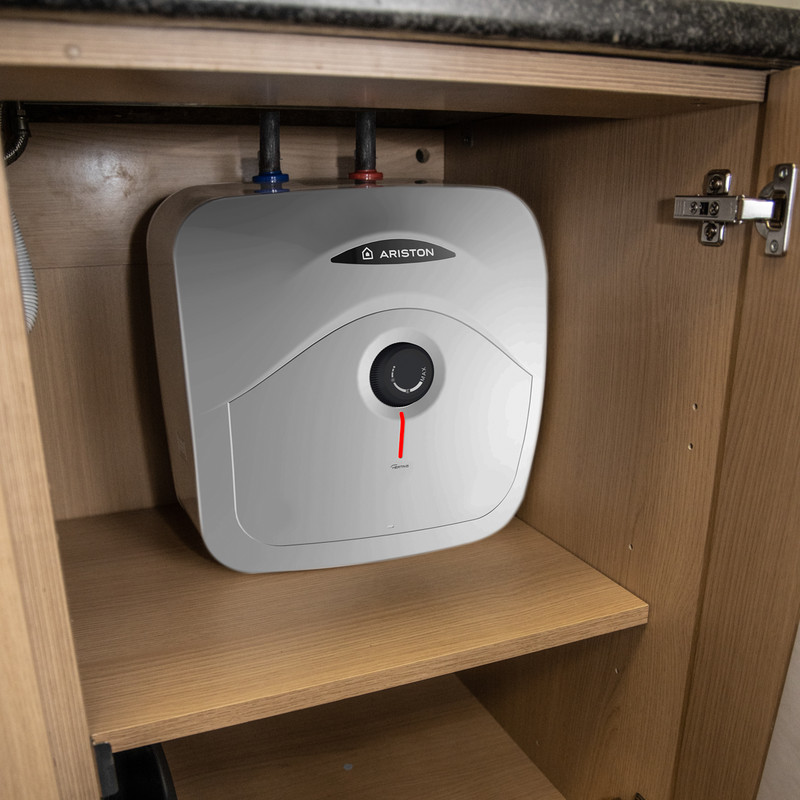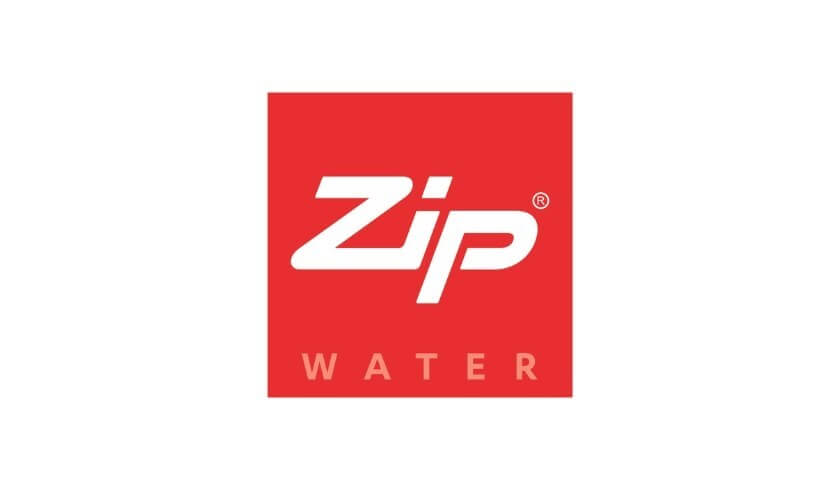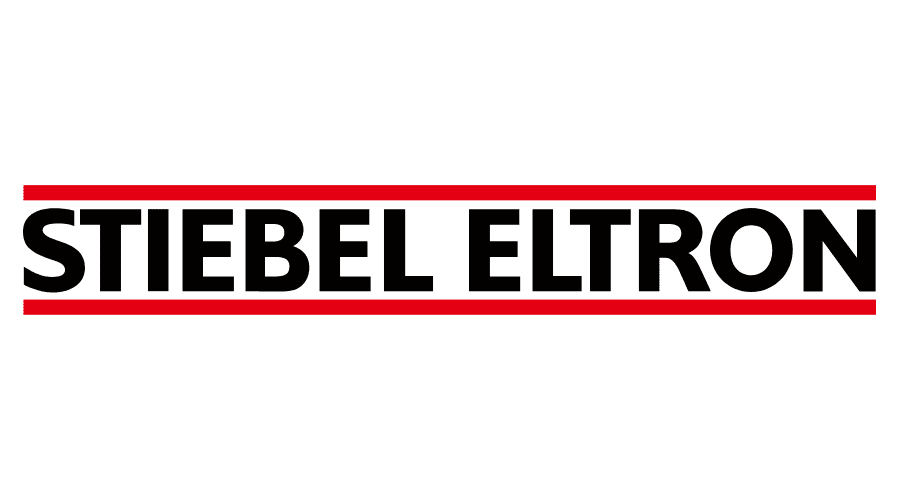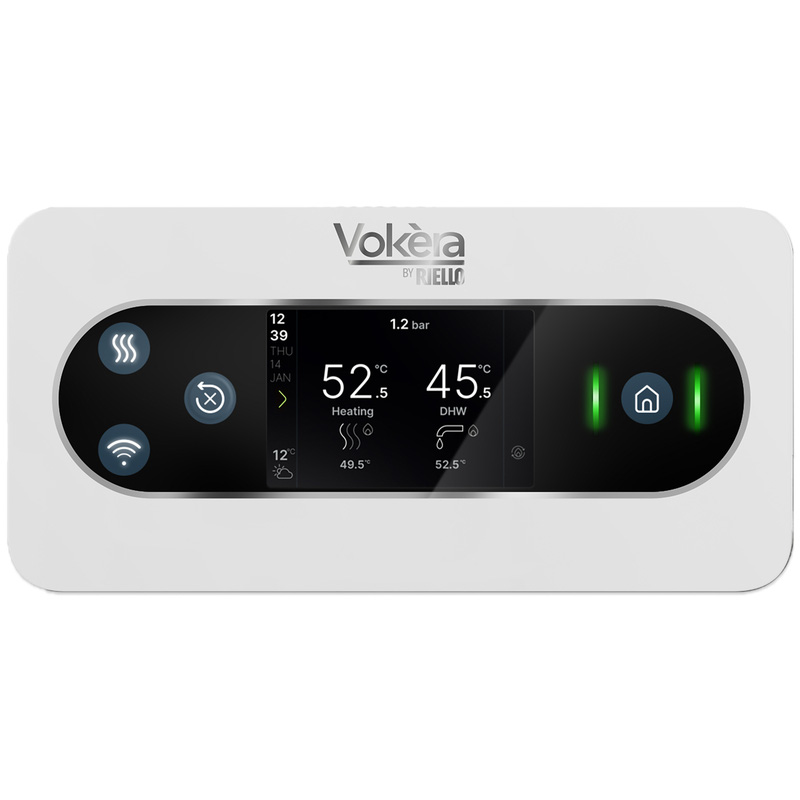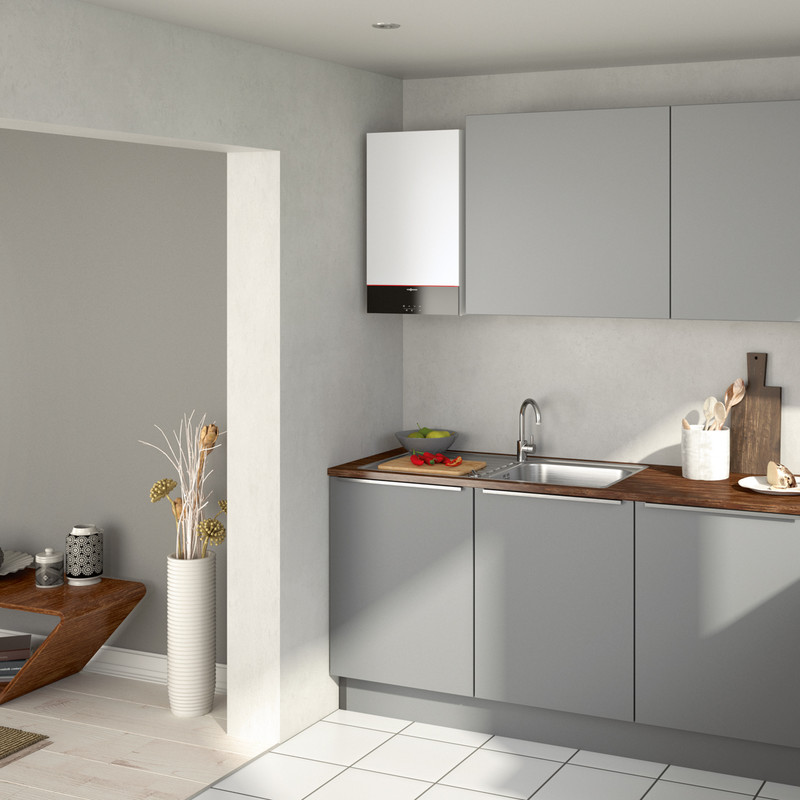When it comes to supplying hot water in your home, office, or even something like a caravan, choosing the right type of water heater can make a big difference when it comes to comfort and efficiency. With so many compact and versatile options available, like undersink, oversink, instant, and stored water heaters, it’s easier than ever to find a solution that fits your space, budget, and usage needs.
In this guide, we’ll break down the key features, benefits, and drawbacks of each type of small water heater. Whether you're short on cupboard space, or just need a simple setup for handwashing, this overview will help you decide which model best suits your day-to-day hot water demands.
Types of Water Heaters
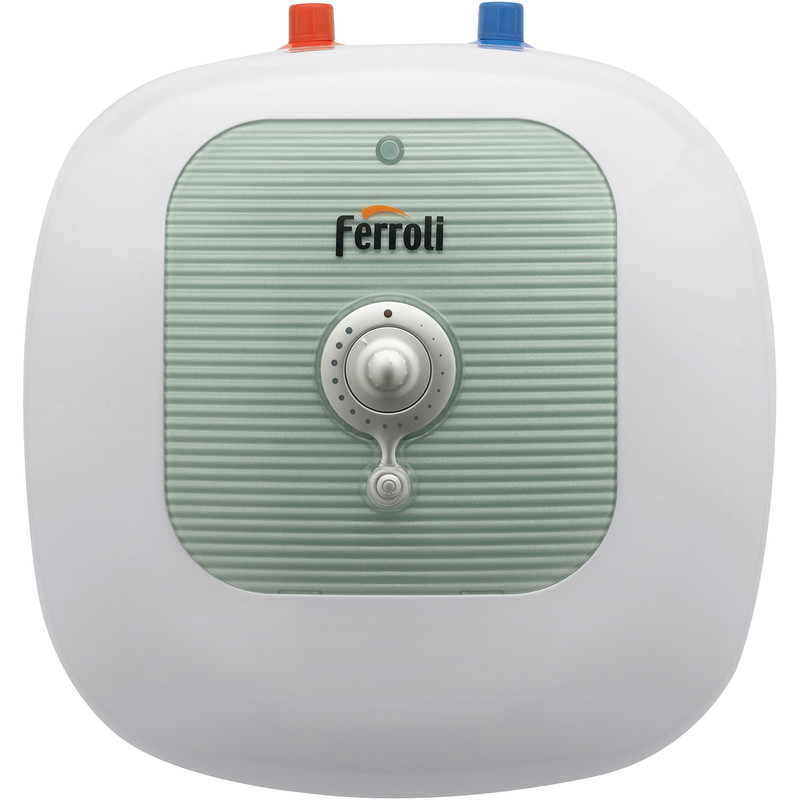
Undersink Water Heater
Undersink water heaters are a perfect space-saving solution for homes and workplaces where room is limited. These compact units fit neatly beneath sinks, making them ideal for areas with limited wall space or where a discreet installation is preferred. Commonly referred to as point of use water heaters, they’re ideal for small kitchens, bathrooms, or office kitchenettes, providing hot water exactly when and where you need it.
These water heaters come in two main types: storage models that hold between 5 to 30 litres of water, and instant models that heat water on demand. Instant options are usually more compact and are ideal for settings with very tight space constraints. Many under sink units include temperature adjustment features, allowing you to easily control water heat levels for comfort and safety.
While under sink water heaters are incredibly convenient and easy to integrate into modern kitchen systems, they do have some limitations. They’re generally less energy-efficient than larger, centralized water heating systems. However, they often don’t require an expansion vessel, making installation more straightforward in many cases.
Advantages
-
Compact and space-saving
-
Quick and easy installation
-
Ideal for kitchens, bathrooms, or offices
Things to Consider
-
Less energy-efficient
-
Limited hot water capacity
-
May not suit high-demand areas
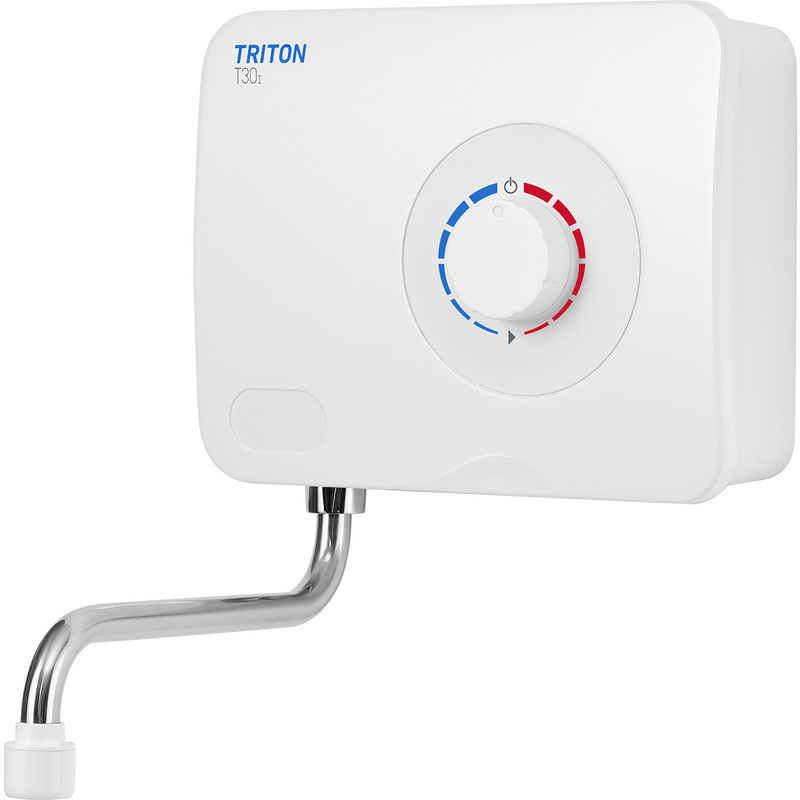
Oversink Water Heater
Oversink water heaters are a practical and economical solution for small spaces, where hot water is needed quickly and efficiently. Designed to be installed directly above a tap, they’re ideal for handwashing stations in understairs toilets, utility rooms, or even caravans. These units are commonly used in locations with limited cupboard space, making them a better option than under sink heaters when storage might be tight.
They operate by heating water instantly as it flows through the unit, meaning there’s no need for a storage tank or expansion vessel. This continuous supply system is perfect for situations where hot water demand is low but frequent, like washing hands or rinsing dishes. Some models even come with an integrated tap, providing a convenient all-in-one solution.
Because oversink water heaters only use energy when hot water is needed, they can be more economical than storage-based options. They’re also extremely easy to install, making them a popular choice for DIY enthusiasts and for those wanting a quick upgrade. With no need for a hot water cylinder or complex plumbing, they’re especially well-suited to remote or secondary water points.
Advantages
-
Compact and easy to install
-
Continuous hot water supply
-
More economical for low use areas
Things to Consider
-
Visible unit above sink
-
Limited to smaller water needs
-
Often only suitable for one outlet

Instant Water Heater
Instant water heaters, also known as tankless or on-demand water heaters, provide hot water exactly when you need it, without storing any in a tank. These units are designed to heat water as it flows through the system, eliminating standby energy loss and offering a more efficient alternative to traditional storage water heaters. They’re perfect for those of you who are more energy-conscious or if you have minimal hot water needs.
Many instant water heaters are compact enough to be installed discreetly under a sink, but wall-mounted and oversink versions are also available. Wall-mounted models can be slightly larger to meet higher demand but still offer the same core benefit—hot water on tap, without storage. With no tank to refill, there's no risk of running out of hot water, making them ideal for steady, low-volume use.
Although they offer great efficiency, instant heaters can come with a higher upfront cost and sometimes deliver limited flow rates, which may cause temperature fluctuations if demand exceeds capacity. Despite this, they remain a popular choice for homes, workspaces, and caravans looking for a continuous yet compact water heating solution.
Advantages
-
Energy-efficient, no standby heat loss
-
Unlimited hot water supply
-
Compact and space-saving
Things to Consider
-
Higher upfront cost
-
Limited flow rate
-
Possible temperature fluctuations
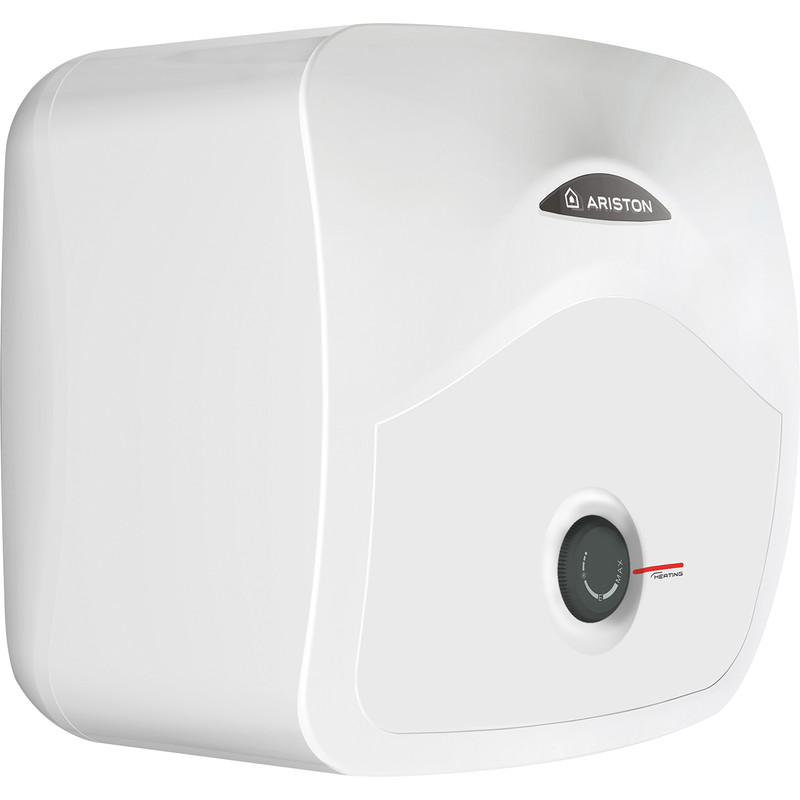
Stored Water Heater
Stored water heaters are a reliable choice for providing hot water in homes, offices, or small commercial settings. Unlike instant models, these heaters warm and store a set volume of water, usually between 5 to 30 litres, ready for use when needed. They’re typically fed from a cold water supply and allow you to adjust the temperature using built-in controls for personalized comfort.
Choosing the right size stored water heater depends on the hot water demand, larger households or higher-use spaces may benefit from a bigger capacity. Smaller units tend to heat up more quickly, while larger models take longer but can serve more usage at once. Stored water heaters are often more affordable to purchase upfront compared to instant or continuous-flow systems.
While these units are relatively simple to install and maintain, their finite hot water supply means you may have to wait for a refill if the tank runs dry. Additionally, they can be less energy-efficient in the long term due to standby heat loss, where energy is used just to keep the stored water hot; even when it’s not being used.
Advantages
-
Affordable upfront cost
-
Simple maintenance
-
Quick heat-up time (smaller units)
Things to Consider
-
Finite hot water supply
-
Standby heat loss
-
Slower recovery time (larger units)
Key Water Heater Features
Power Output
The power output of a water heater, measured in kilowatts (kW), determines how quickly it can heat water. A higher kW rating means faster heat-up times and better performance when hot water is needed quickly. However, this can come at the cost of energy efficiency, as higher-powered units may use more electricity during operation. For lower-demand areas, a lower kW model may be more economical in the long run.
Vented or Unvented
Water heaters come in two main pressure systems: vented and unvented. Vented heaters need a dedicated vented tap, which allows excess pressure from heated water to escape safely. These are typically simpler and don’t require additional components. Unvented systems, on the other hand, are sealed and usually require an expansion vessel to manage pressure build-up. This makes them more versatile with standard taps but slightly more complex to install.
Storage Capacity
For water heaters that store hot water, such as under sink or stored models, the tank size is an important factor. Storage capacities typically range from 5 to 30 litres. Smaller tanks are ideal for light, infrequent use, such as handwashing or occasional cleaning, whereas larger tanks are more suited to busy households or workplaces where water demand is higher. Matching capacity to usage ensures you won't run out of hot water.
Potable vs Non-Potable
Another key consideration is whether the unit supplies potable (safe for drinking) or non-potable water. If the heater is intended for a kitchen or any application involving food or drink, it must be rated for potable use. Non-potable water heaters are more common in places like utility rooms or for handwashing stations where drinking-quality water isn’t necessary.
Gas vs Electric
Most small water heaters are electric due to their ease of installation, availability, and suitability for point-of-use applications. However, in some cases, gas water heaters may be preferred. This is becaue gas heaters offer faster heating in high-demand scenarios, though they typically involve more complex installation and ventilation requirements.

